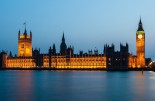Janus Henderson: Investors hesitant about the BoE's ability to sustainably achieve a 2% inflation target
Janus Henderson: Investors hesitant about the BoE's ability to sustainably achieve a 2% inflation target

Despite coming in slightly above expectations, today’s release showed that headline inflation continues to decline quickly from the double-digit levels of only a few months ago. However, core inflation remains stubbornly high at 6.9% and is now slightly above the headline level.
This presents a headache for the Bank of England (BoE) as it will want to see this less volatile measure decline to suggest that cost pressures are sustainably returning to target. Core inflation suggests a stickier underlying inflation dynamic as services cost growth continued to accelerate.
Yesterday’s wage growth suggests that the desired ebb in services inflation might prove elusive in the near term, as regular pay growth – a key driver of services costs - rose to almost 8%. In contrast goods inflation slowed again as it continues its plunge from the very high levels seen over the last year.
The latest data showed a clearer indication that food cost growth is now easing, helping to reinforce the reduction in headline inflation. Along with energy costs, these tend to be the more transient inflation elements. Energy costs have gone from being the most significant contributor to inflation, to now pulling in the opposite direction.
In contrast to indications for the Fed and ECB, investors remain more sceptical about the BoE’s ability to return inflation consistently to the 2% target over the longer term. UK 10-year breakeven rates continue to price in a larger inflation premium, indicating less confidence in the BoE’s ability to fulfil its mandate.
Markets are pricing in roughly two to three hikes over the rest of the year, as concerns remain about how much further the BoE will decide to push to fully defeat inflation. However, the BoE is aware that it only has so much time before the tighter financial conditions start to bite more widely in the economy.
For example, mortgage borrowers had increasingly locked in longer fixed rate deals in the year preceding the rapid rise in interest rates. This terming out of debt creates some breathing room for those borrowers but still leaves likely intensive transmission of tighter monetary policy to come for mortgage holders. While the BoE is aware of this potential mortgage timebomb, it is caught between its inflation mandate and concerns about causing a harder economic landing.





